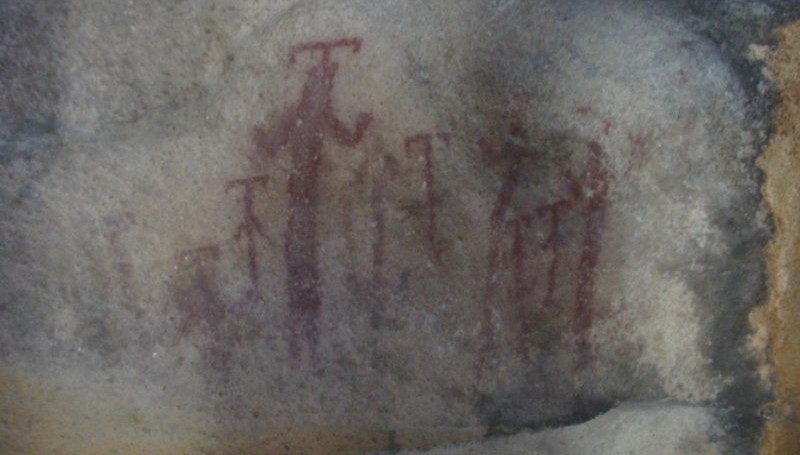Художники Латмоса, озеро Бафа
The fate of Lake Bafa and the Mountains of Latmos (Beşparmak Mountains) changed when the German archaeologist Anneliese Peschlow came here in 1971. After many discoveries in the ancient city of Heraklia, she pursues drawings in which peasants talk about her in rough and inaccessible terrain on the banks of ancient stone paved roads.
In the Söğütözü location, the Göktepe rock painting was the first one. Pictures BC. 6000 dates. In other words, artists from Latmos had drawn these pictures 8000 years ago. A new culture has been discovered and with approximately 20 years of work, local people, shepherds, beekeepers and information received from rigorous research as a result of close to 180 pictures have been found and still continues to be found.
In the thousands of rocks, it is an effort that requires experience, attention, time and power to find these pictures under which rock, which water source is next to which source. In some pictures, it reflects the characteristics of the red color.
Latmosian artists have drawn people to the wild cliffs of the mountain, in contrast to hunting animals in ancient rock paintings in the world. Sometimes they showed the beauty of art by drawing schematically and sometimes naturalist.
The best examples of family life can be seen in the rock paintings of Latmos. They reflected the happiness of love to each other on the walls. They drew a picture of how the mother with hopeless hip showing her love for her daughter. They have reflected the dancing images of the men together in the friendship on the rock wall. Sometimes they draw the wedding ceremony of a couple and sometimes the scenes of the spring. There are not only human and family scenes in the paintings, but also water which is the most important need of living life. They have drawn the mender which depicts water. They believed in the sanctity of water. The people who live here are now in settled order and have started farming.
The first details that attract the attention of those who see these unique paintings are T-shaped heads at the head of the figures. As known, in the excavations of Urfa Göbeklitepe T-shaped stones found. Dr. Anneliese Peschlow had gone to Urfa Göbeklitepeye to study the stones here and to investigate the similarity in the T-forms that were on the head of the Latmos Gods.
In short, the artists of Latmos drew a picture of happiness 8000 years ago. No paper, no pencils, but they discovered iron oxide in the mountain stones. They reflected the shapes they designed in their dreams on the surface of the rocks so that they could reach us until thousands of years later. Although it is not known who they are and what they are, the most important features known are the images they draw up to us. These paintings are the legacy of humanity of Latmosian artists.

